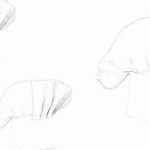Tezpur is one of the ancient places with a glorious past situated in the north-east region of India, Her old name “Sonitpur” is connected with the legends of abduction of Kumar Anirudha from Dwaraka by Chitralekha as a bridegroom for princes Usha, the daughter of King Bana which lead to a fierce battle between Hori and Hara. The legend hinted itself to the infiltration of outsiders even from the remotest western corner of the Indian sub—continent to this independent land. The fusion was cooled down by matrimonial relationship. Religious tolerance between the two rival groups of Lord Shiva and Bishnu was established and cultural assimilation took place. Besides this, king Bana’s friendship with Narakashur, the king of Pragjyotishpur who was the son of Bishnu and Basumati and an ardent devotee of goddess Kamakhya, revealed the prevalence of the “Sakta”, who was also at the same time in this land. ‘The remembrance of these legends are still alive in the minds of the people with the existence of Agnigarh, where princess Usha was kept concealed and the temples Mahabhairab and Bhairahi where they worshipped. Similar existence of lots of old temples like Rudrapad, Bhairabpad, Shideshwar, , Hengulashwar, Holeshwar etc. signifies that Tezpur is obviously the land of Lord Shiva,, the non-Aryan god who was Aryanised later on.
Racial Integrity:
Broadly speaking, north-east region (renamed later on as “ASSAM`) was then in one of the migration routes of mankind. Wave after wave various races of people like Austric, Negroide, Tibeto-Burman, Alpine-Aryan entered from east and west since pre-historic times. They merged creating a composite “nation” called “the ASSAMESE”.
Archeological evidences and related sources prove that several trade—routes existed through which communication prevailed with the north and south east Asian countries like Bhutan, Tibet, China, Burma (Myanmar), Indonesia etc, with India through Assam since time immemorial. Obviously, being the centre-place, Tezpur (erstwhile Sonitpur) bore the burden of this trade-communication heavily and was one of the principal centre of trade and communication with the hilly remote areas o fthe aforesaid countries.
During the historic period several kings ofthe Bhouma and Barmana families whose capital was either at Pragjotishpur (present (Guwahati) or at Harupeshwar (present Tezpur)conquered and ruled even Banga-Udra-Kalinga(undivided Bengal, Orrissa,and Bihar) like Samudra Barman, Kalyan Barman, Mahabhuta Barman, Bhaskar Barman, Shri Harsha Dev, Harjar Barman and Banamal Barman-one of the famous educational institutions of ancient India “Nalanda University” and the sea-route to China was under King Bhashkar Barman and some of these kings. Till the reign Bhaskar Barman the name of “Bay of Bengal” (Bangoupsagar) was called “Luit-Sugar”. According to “Raj Torongini”, the history of Kashmir, daughter of king Abonti Barman of this region was married by Meghabahan, the king of Kashmir, as per inscription preserved in the “Pashupatinath” temple of NepaI, Rajyamoti daughter of king Shri Harsadev , who was the chief queen of Nepalraj, had built the temple. With her several hundreds of people were migrated to Nepal from the locality of Tezpur(Singri), These and other historical source prove that cultural influence of the North-Eastern regions absorbed in those parts of India and scholars, skilled artisans and artists of various fields were borrowed by them also to cater their need. It is recorded on the “Madadpanj” preserved in the Jagannath Temple of Orissa that several Thousands of people migrated to Assam at a certain time and who settled at the bank of the Kalang. The name of a place “Uriagaon” in Nagaon District is still a fact to this. Such instances are sufficient to prove that a comprehensive social history of Assamese culture has not yet been written comprising from the pre-historic migration of the Austic, Aryans, Tibeto-Burman etc. to the modern age, for a proper glimpse on the cultural inheritance brought by different people of different times and their assimilation.
Coming to Tezpur:
The name of “Parbotia” itself hints to a significant point of view. “Parvatiyas” were the persons who liaise with the hills (Parvat) and the Plains (Bhoiyam). Evidently, Ahom Kings created several posts under their direct control like “Parbatia Kuanri” (i.e. queen of the Parbat). “Parbatia Phukan” (Commander of the hilly areas, so on. This system of liaison and control existed in the historic time for meeting trade-links as well as civil and military purposes of the kings of Pragjytishpur and Haroopeshwar, King Bhagadatta was mentioned as Parbatpate (Owner of the Hills) and his soldiers comprised with the Kirat-Chin and other hill people. At a time they merged with other subjects of the kings and became part and parcel of the “nation”, at large, creating a different language that that of middle India, and a different art form and culture since seventh century A.D, onwards, in Assam.
Archaeological Findings:
In and around Tezpur, relics of historical importance and artistic beauty discovered at various localities like Da-Parbatiya (or Dah-Parbatiya), Bamuni Pahar, Garh-Daul, Ketekibari, Da-Chuburi, Barphukhuri, etc. Among these, the finest and the oldest specimen of sculptural or Iconic art in Assam is the temple (stone) door-frame of Dah-Parbatiya of the early Gupta schools of sculpture. The goddess Ganga and Jamuna stands with Garlands in hands in artistic pose and elegant posture. The door Jambs are decorated with beautiful ornamental foliage. The artist’s sense of proportion, the beautiful symmetry of the figures and ornamental devices, and the excellence of execution tend to prove that this door lintel belongs to the same period as the great schools of sculpture which existed at Pataliputra and Banaras in the fifth and sixth centuries A.D.
Noted historian K.L Borouah, the author of “Early History of Kamrup” agreed that “the temple mush have been built in the fifth or sixth century A.D by a predecessor of Bhaskar Varma, the most powerful king of ancient Kamrup of the seventh century, a contemporary and worthy ally of celebrated Harshabarddhan, the emperor of mid-India”. (The period suggested by R.D. Banarjee and K.L Boruah has been questioned by some scholars no, but more scrutiny and analysis wanted in this respect.
The other ruins of historical importance are scattered at Bamuni Hills, lying in the Cole Park (Chitralekha Udyan) and the missionary compound. “These remains have been dated back to the 9th-10 century. Of these findings, the highly striking specimens are the two massive ornamental stone-pillars now adorning the gate of the Missionary compound”. In this respect R.D. Banarjee remarked long ago that – ” the most remarkable sculpture of the upper end being ornamented with a broad band having “Kirtimukh” at the top, and the lower with dentils. Over this band the Shaft is round and appears to be lathe turned like the upper parts of western Chaulukyan columns of the Bombo Presidency.”
A number of Terracotta Plaques was discovered while clearing the jungles at Dah-Parbatiya. The best example of terracotta plaques known at present, which can be relegated to the Gupta period , were found in 1926 at Dah-Parbatiya. They show the nice poise and the naturalism of human figures possessing round faces, in which are set two oblique eyes a broad fore-head, a pair of thin lips and a small chin”.
To sum it up and observe the best of the works are yet to be done for collection. Preservation and scrutiny or the ruins for which keen interest and due consciousness is wanted from the public as well as from the government. A renowned archaeologist lamented that before taking any measures to unearth the ruins of the place,(a long wall and valuable materials although discovered) these were buried mostly found after the construction work completed of the present court building. Thus, burying all historic facts forever, similarly a ditch was also there at a corner of the site of the famous door-frame at Da-Parbatiya which was filled up by soil without any scratch work whatsoever. Examples of such slackness and lack of sense of history are done till now not only in the archaeological sphere but other spheres too.
Antiquity of Tezpur is proved by the inscriptions of kings discovered so far. Famous rock inscriptions of Maharajadhiraj Harjarbarman still existed in one corner of Parbatiya, a copper plate was also discovered and named “Tezpur Copper Plates” inscription of “Banamal Barmadev” at this area, another copper plate inscription of Harjarbarma found at Hayungthal, and Parbatiya plates of Banamal Barmadev which have proved the antiquity of the land and its grandeur. A vast pond was executed by king Hajarbarman’s which is still existed in the Bam-Parbatiya area namely Hajarpukhuri. King Hajarbarman illusions son
Maharajadhiraj Banamaldev erected a large place and constructed a great temple and established his deity “a gold Shivling”. In fact the ruins of the palace discovered at the site of present court building was the noted palace built by Banamal Barmadev, moreover the inscription of Banamal Barmadev narrated the natural beauty of the mighty Brahmaputra (Lohit) flowing within a short distance of the place. The Lotus-Pond (Padum-Pukhuri) mentioned in the inscription are still there at Tezpur residing with the glorious deeds of King Harjarbarman and his son Banamal Barmadev.


Leave a Reply